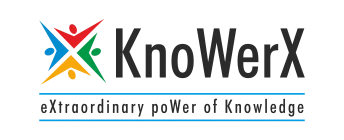Grow Your Business: Align Supply and Demand Effectively

In today’s dynamic business environment, achieving supply and demand alignment is critical for sustainable growth. As an industry leader in Supply Chain Management Training, KnoWerX brings you actionable strategies to help professionals and organizations optimize their operations and drive success. Here are some expert tips to master supply and demand alignment:
Leverage Data Analytics for Accurate Forecasting
Accurate demand forecasting is the cornerstone of supply and demand alignment. Utilize advanced data analytics tools to analyze historical data, market trends, and customer behavior. This will help you predict demand more precisely and align your supply chain accordingly.
- Importance: Data-driven insights reduce guesswork and improve decision-making.
- Actionable Tip: Invest in predictive analytics software to stay ahead of demand fluctuations.
Adopt Agile Supply Chain Practices
Agility is key to responding to fluctuations in demand. Implement flexible supply chain processes that allow you to scale up or down quickly. This ensures that your supply chain remains aligned with changing market demands.
- Importance: Agile practices minimize disruptions and improve responsiveness.
- Actionable Tip: Use real-time monitoring tools to adapt to sudden changes in demand.
Enhance Collaboration Across Departments
Supply and demand alignment requires seamless collaboration between sales, marketing, procurement, and operations teams. Foster open communication and shared goals to ensure everyone is working toward the same objectives.
- Importance: Cross-functional collaboration eliminates silos and improves efficiency.
- Actionable Tip: Conduct regular inter-departmental meetings to align strategies.
Invest in Technology and Automation
Modern supply chain technologies, such as AI and IoT, can significantly improve supply and demand alignment. Automate repetitive tasks, monitor inventory in real-time, and optimize logistics to reduce inefficiencies and meet demand effectively.
- Importance: Automation enhances accuracy and reduces operational costs.
- Actionable Tip: Implement AI-powered tools for demand forecasting and inventory management.
Focus on Inventory Optimization
Maintaining the right balance of inventory is crucial. Overstocking leads to increased costs, while understocking results in lost sales. Use inventory management tools to ensure optimal stock levels and align them with demand patterns.
- Importance: Optimized inventory reduces waste and improves profitability.
- Actionable Tip: Adopt a just-in-time (JIT) inventory system to minimize excess stock.
Build Strong Supplier Relationships
A reliable supplier network is essential for supply and demand alignment. Develop strong partnerships with suppliers to ensure timely deliveries, negotiate better terms, and mitigate risks associated with supply chain disruptions.
- Importance: Strong supplier relationships enhance reliability and reduce risks.
- Actionable Tip: Establish long-term contracts with key suppliers for better collaboration.
Monitor Market Trends and Customer Preferences
Stay ahead of the curve by keeping a close eye on market trends and evolving customer preferences. This proactive approach will help you anticipate changes in demand and adjust your supply chain strategies accordingly.
- Importance: Market awareness ensures you remain competitive and relevant.
- Actionable Tip: Use social media and customer feedback to track emerging trends.
Implement Continuous Improvement Practices
Regularly review and refine your supply chain processes. Conduct performance audits, gather feedback, and identify areas for improvement to ensure sustained supply and demand alignment.
- Importance: Continuous improvement drives long-term efficiency and growth.
- Actionable Tip: Use KPIs to measure and improve supply chain performance.
Train Your Workforce
Empower your team with the right skills and knowledge. KnoWerX’s Professional Training programs in Supply Chain Management equip professionals with the expertise needed to achieve supply and demand alignment and drive organizational growth.
- Importance: A skilled workforce ensures effective implementation of strategies.
- Actionable Tip: Enroll your team in specialized training programs to stay updated on best practices.
Adopt a Customer-Centric Approach
Align your supply chain with customer needs by focusing on delivering value. Understand their pain points, preferences, and expectations to ensure your supply chain meets their demands effectively.
- Importance: Customer-centricity boosts satisfaction and loyalty.
- Actionable Tip: Use CRM tools to gather and analyze customer data for better alignment.
Frequently Asked Questions
What is supply and demand alignment?
Supply and demand alignment refers to the process of synchronizing supply chain operations with customer demand to ensure optimal efficiency, reduce costs, and improve customer satisfaction.
Why is supply and demand alignment important?
It helps businesses avoid overstocking or understocking, reduces operational costs, improves customer satisfaction, and drives sustainable growth.
How can technology improve supply and demand alignment?
Technologies like AI, IoT, and data analytics enable accurate demand forecasting, real-time inventory tracking, and efficient logistics management.
What role does workforce training play in supply and demand alignment?
A well-trained workforce can implement best practices, use advanced tools effectively, and adapt to changing market demands, ensuring better alignment.
Ending Notes

By implementing these strategies, businesses can achieve supply and demand alignment, reduce costs, improve customer satisfaction, and drive growth. At KnoWerX, we are committed to helping professionals and organizations excel in supply chain management through our high-quality training programs and expert guidance.
Join KnoWerX today and take the first step toward mastering supply and demand alignment for a successful and sustainable future!
Image Reference: Freepik
Disclaimer: All trademarks, logos, and brand names are the property of their respective owners. All company, product, and service names used in this website are for identification purposes only. Use of these names, trademarks, and brands does not imply endorsement.



